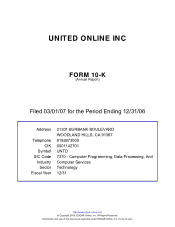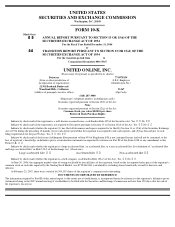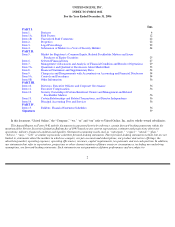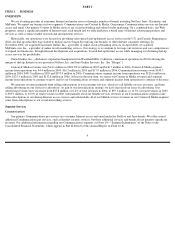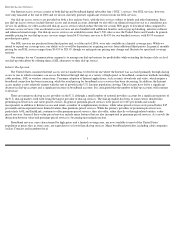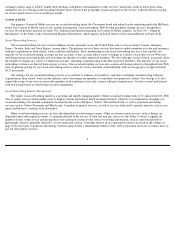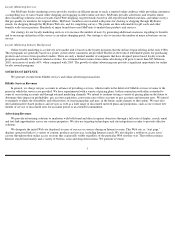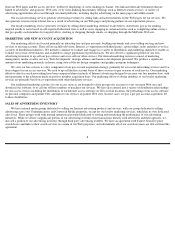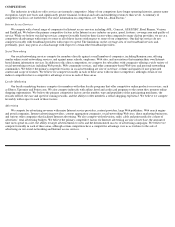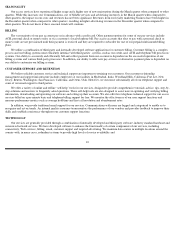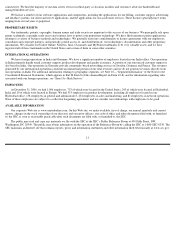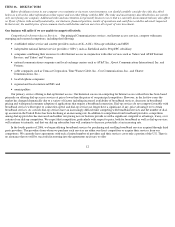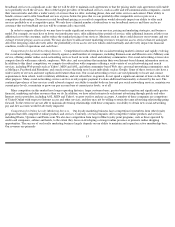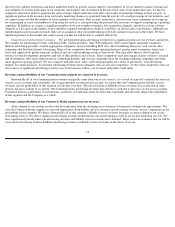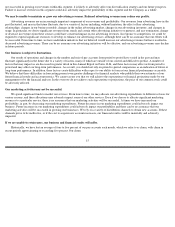Classmates.com 2006 Annual Report Download - page 6
Download and view the complete annual report
Please find page 6 of the 2006 Classmates.com annual report below. You can navigate through the pages in the report by either clicking on the pages listed below, or by using the keyword search tool below to find specific information within the annual report.
Internet Access Services
Our Internet access services consist of both dial-up and broadband digital subscriber line (“DSL”) services. Our DSL services, however,
were only launched at the end of 2006 and we do not currently generate significant revenues from our DSL services.
Our dial-up access services are provided on both a free and pay basis, with the free services subject to hourly and other limitations. Basic
pay dial-up access services include Internet access and an email account, although we also offer an enhanced email service as a standalone pay
service. In addition, we offer accelerated dial-up access services which reduce the time for certain Web pages to download when compared to
our basic access services. Our accelerated access services are also bundled with additional benefits such as pop-up blocking, antivirus software
and enhanced email storage. Our dial-up access services are available in more than 9,500 cities across the United States and Canada. In general,
monthly pricing for our dial-up access services ranges from $6.95 for basic services to $14.95 for our bundled services, with $9.95 our most
prevalent price point.
Our DSL services are purchased from third parties and, as of the end of 2006, were only available in a limited coverage area. While we
intend to expand our coverage area, our ability to do so will be dependent on acquiring services from additional third parties. In general, monthly
pricing for our DSL services ranges from $14.95 to $29.95, though we anticipate our pricing may change and fluctuate by speed and coverage
territory.
Our strategy for our Communications segment is to manage our dial-up business for profitability while extending the business life cycle of
our dial-up subscribers by offering them a DSL alternative to their dial-up service.
Industry Background
The United States consumer Internet access service market has evolved from one where the Internet was accessed primarily through dial-
up
access to one in which consumers can access the Internet through dial-up or a variety of high-
speed, or broadband, connection methods including
cable modems, DSL or wireless connections. Consumer adoption of Internet applications, such as music downloads and video, which require a
broadband connection has been increasing, while the retail pricing for broadband access services has been decreasing. In addition, the Internet
access market is now relatively mature with the rate of growth in the U.S. Internet population slowing. These factors have led to a significant
decrease in dial-up accounts and a significant increase in broadband accounts. It is anticipated that the number of dial-up accounts will continue
to decrease.
There are numerous dial-up access providers in the U.S. although a small number of national providers account for a significant majority of
the U.S. dial-up market, with AOL being the largest provider of dial-up services. The dial-up market has been, to some extent, divided into
premium-priced services and value-priced services. In general, premium-priced services were priced over $15 per month and usually
incorporated, in addition to Internet access and email, a number of complementary features, while value-priced services were priced below $15
per month and incorporated more limited features than premium-priced services. While the primary providers of premium-priced services,
particularly AOL and EarthLink, continue to offer premium-priced services, they also offer, either directly or through related entities, value-
priced services. Some of these value-priced services include many features that are also incorporated in premium-
priced services. As a result, the
distinction between value-and premium-priced services is becoming increasingly unclear.
Broadband services, once characterized by high prices and a limited coverage area, are now available to most of the United States’
population at prices that, in some cases, are equivalent to or lower than dial-up services. Many broadband providers, including cable companies
such as Comcast and incumbent local
5

